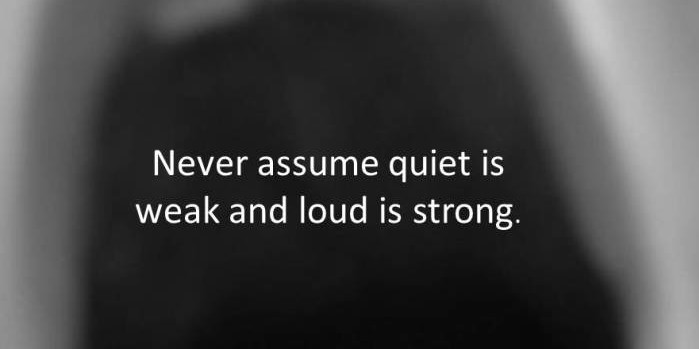 A couple weeks ago, a few of us took a Myers-Briggs test just for fun. Upon the big reveal, we discovered that all three of us were INFJs.
A couple weeks ago, a few of us took a Myers-Briggs test just for fun. Upon the big reveal, we discovered that all three of us were INFJs.
INFJs indeed share a very unique combination of traits: though soft-spoken, they have very strong opinions and will fight tirelessly for an idea they believe in. They are decisive and strong-willed, but will rarely use that energy for personal gain – INFJs will act with creativity, imagination, conviction and sensitivity not to create advantage, but to create balance. Not only does this personality type need to be able to express their creativity and insight, INFJs need to know that what they are doing has meaning, helps people, leads to personal growth and, all the while, is in line with their values, principles and beliefs. It should also be remembered that at the end of the day, INFJs are still Introverts (I), and their popularity isn’t always welcome – they will need to step back and act the lone wolf from time to time, pursuing their own goals in their own ways. [source]
That intrigued me.
If I’m being perfectly honest, I was a little bummed at first. Despite having a clear understanding of what energizes/energy drains me, my first reaction to my result was a wave of disappointment when I saw that “I” heading up the pack.
But why, I wondered? There is no right or wrong personality type, so why did I harbor a secret hope that I would come out an “E?”
We work in a industry where “E” is king. Offices are open. Ideation happens on the spot in group brainstorms. And rightly or wrongly, extroversion is often equated with creativity.
“In previous centuries our culture valued quiet integrity and introspection. However, in today’s culture the emphasis on personality and striving to be noticed has propelled the extroverted personalities to be valued. That person speaks fast, loud, and a lot. They think while they are speaking. The introvert, who articulates her ideas in her mind before speaking, is quiet and reserved, has been pushed to the background.
As a result, it is not always the person with the best, most creative ideas that is heard, but the loudest. The result of this has been a loss of ideas and capabilities of some of the finest thinkers in organizations. That is a huge waste of talent that companies can ill afford to lose. Of course an organization will work best if it can harness the best of all employees, both extroverts and introverts.” [source]
There’s little doubt that within the confines our modern cultural infrastructure, the sun shines brightest on the loudest and proudest, but it’s the often-overlooked introverts who often prove to be the true untapped powerhouses of potential. Why do we value noise over quiet? Why do we evaluate potential based on what someone says rather than what they do? Why do we secretly long for an “E” instead of an “I?”
In her TedTalk, Susan Cain talks to the potential and true nature of introverts. The entire video is worth a watch (and a bookmark) — but if you want a sneak peak, here are ten takeaways from the talk (and yes, they’re backed by research):
- It is estimated that a third to a half of people are introverts.
- There is a difference between introversion and shyness.
- The key to maximizing our talents is to put ourselves in a zone of stimulation that works for us.
- Our most important institutions (workplaces and schools) are designed for extroverts.
- Kids that do better working alone in school (introverts) are often tagged as outliers or problem cases.
- Introverts are most often passed over for leadership positions.
- Introverted leaders often deliver better results than extroverted leaders, perhaps because they tend to be more willing to let other people run with their own ideas instead of putting their own stamp on the ideas of others.
- Groups of people will almost always follow the opinions of the most dominant person in the room.
- There is zero correlation between being the best talker and having the best ideas.
- The best organizations consist of a mix of both extroverts and introverts. More importantly, they create a culture and workspace designed that offers something for both.
But seriously. Watch the talk.
https://www.youtube.com/watch?v=c0KYU2j0TM4